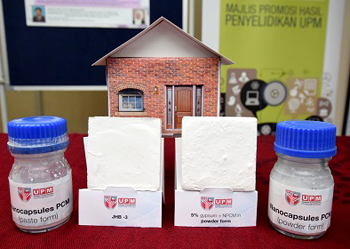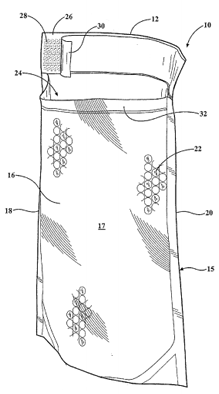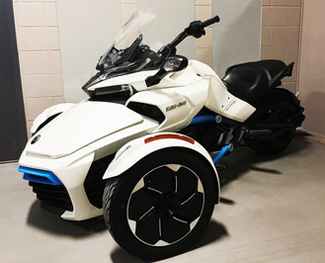 The Phase Change Matters e-mail newsletter is a weekly summary of the latest news and research on phase change materials and thermal energy storage. To subscribe, visit www.puretemp.com/subscribe. For more frequent updates, follow @puretemp on Twitter or visit the Phase Change Matters blog, www.puretemp.com/pcmatters.
The Phase Change Matters e-mail newsletter is a weekly summary of the latest news and research on phase change materials and thermal energy storage. To subscribe, visit www.puretemp.com/subscribe. For more frequent updates, follow @puretemp on Twitter or visit the Phase Change Matters blog, www.puretemp.com/pcmatters.
BUILDING | CONSTRUCTION
Nanoencapsulated PCM for gypsum board is ‘first of its kind in Malaysia’
Researchers at the Universiti Putra Malaysia report the development of a new method of nanoencapsulating phase change material. They say the PCM has proved its effectiveness in the lab and is ready to be put to the test in ceiling tiles and wallboard designed to lower room temperatures and reduce the use of air conditioning.
The nanoencapsulation method, known as miniemulsion in-situ polymerization, is covered by a Malaysian patent application filed in 2015.
 “This NPCM method is the first of its kind in Malaysia that can absorb, store and release thermal heat when the surrounding temperature where the material is located is above or below melting temperature,” Dr. Mohd Zobir Hussein said at the university’s annual technology innovation day in July. “These properties allow the phase change material to store the thermal energy when it melts and release the energy when it solidifies.”
“This NPCM method is the first of its kind in Malaysia that can absorb, store and release thermal heat when the surrounding temperature where the material is located is above or below melting temperature,” Dr. Mohd Zobir Hussein said at the university’s annual technology innovation day in July. “These properties allow the phase change material to store the thermal energy when it melts and release the energy when it solidifies.”
The research is detailed in several papers published in the past three years, including “Laboratory-Scale Studies on Smart Gypsum Composite Boards Incorporated with Nano-Encapsulated Organic Phase Change Material for Thermal Comfort Building Application” (Journal of Materials in Civil Engineering, March 2016):
“Composite boards were prepared by mixing 1–30% by weight nano-encapsulated n-octadecane phase change material (PCM) with gypsum to develop gypsum-based building materials with thermal energy storage (TES) capability. The nanocapsules were prepared by encapsulating n-octadecane in nano-sized styrene-methyl–methacrylate copolymer shells using one-step mini-emulsion in situ polymerization. A thermal performance testing device was designed to evaluate the heat storage effect of the resulting gypsum composite. The results indicated that composite boards containing n-octadecane nanocapsules effectively decreased the temperature peak of the experimental test room compared with gypsum board without n-octadecane nanocapsules.”
Related research includes:
• Advanced energy storage materials for building applications and their thermal performance characterization: A review (Renewable and Sustainable Energy Reviews, May 2016)
• Shape-stabilised n-octadecane/activated carbon nanocomposite phase change material for thermal energy storage (Journal of the Taiwan Institute of Chemical Engineers, October 2015)
• Nano-encapsulated n-nonadecane using vinyl copolymer shell for thermal energy storage medium (Macromolecular Research, July 2015)
• Nano-encapsulated organic phase change material based on copolymer nanocomposites for thermal energy storage (Energy, March 2014)
Zobir, head of the research team, said in an e-mail interview: “We are looking for a company or manufacturers to commercialize the product, especially for up-scaling the process and subsequently use the product for wallboard or ceiling tiles.”
 PATENTS
PATENTS
Flexible life sciences matter transfer pouch
U.S. patent application 20160229622 (inventor Raymond Booska, Melbourne, Fla.):
“A flexible life sciences materials transport pouch having a phase change material contained therein. The pouch includes an interior compartment adapted to hold the contents at a predetermined temperature range. The pouch includes at least two side walls joined together at a seam and further including a lower gusset allowing the pouch to stand upright. The pouch further contains at least one secondary interior compartment adapted to hold a quantity of phase change material. The phase change material may contained within its own container, such as a separate pouch.”
Shaped covering blanket with pocket
U.S. patent application 20160227947 (inventor Elizabeth Lynne Crouch, Sheridan, Ore.):
“A covering blanket, comprised of a fabric material, and having a tapered shape such that a width at a top of the covering blanket is greater than a width at a bottom of the covering blanket. The covering blanket includes a pocket disposed at the bottom thereof for providing an extra layer of covering for the feet of a user. The covering blanket optionally includes a means for thermal regulation for keeping the feet of a user warm when kept within the pocket. … One suitable phase change material capable of use as the thermal regulation means is the BioPCM phase change material available from Phase Change Energy Solutions, Inc. of Asheboro, N.C.”
Storage systems and methods for medicines
U.S. patent application 20160228328 (inventors Sandy Wengreen and Eric John Wengreen, Sammamish, Wash.):
“People can damage their medicines by taking them outside in hot or cold weather. On the other hand, some people need to carry their medicines with them wherever they go (even if the weather is extremely hot or cold). Specially constructed storage systems can protect medicines from damage due to hot and cold weather without requiring bulky structures or expensive components that consume electricity to regulate temperature. … In several embodiments, storage systems include an insulated container comprising a base and an opening configurable to enable removing a medicine from inside the insulated container; a first chamber located inside the insulated container, wherein the first chamber is configured to hold the medicine; a first phase change material located inside the insulated container; and/or a second phase change material located inside the insulated container.”
IN BRIEF
• Mesa Canada Inc. has acquired certain assets and liabilities of Rapid Aid Corp., the company’s exclusive supplier of cold chain packaging gel products. Terms of the deal were not disclosed.
 • Bombardier Recreational Products of Canada has produced an electric version of its three-wheel Can-Am Spyder motorcycle. The concept vehicle is equipped with a 16 kWh battery and has a range of about 170 km (106 miles). Phase change material is used to cool the lithium-ion batteries. No word on whether a production model is planned.
• Bombardier Recreational Products of Canada has produced an electric version of its three-wheel Can-Am Spyder motorcycle. The concept vehicle is equipped with a 16 kWh battery and has a range of about 170 km (106 miles). Phase change material is used to cool the lithium-ion batteries. No word on whether a production model is planned.
• Dr. Barbara Pause of Textile Testing & Innovation will be among the speakers at this year’s Industrial Fabrics Association International Expo in Charlotte, N.C. The topic of her Oct. 18 presentation: “Taking the heat – thermal control of the automotive interior with phase change material.”
• CALMAC is applauding the Massachusetts Legislature for approving an “energy diversity” bill that promotes the use of renewable energy sources and energy storage technologies. The legislation, signed into law Monday by Gov. Charlie Baker, requires the state to seek long-term contracts for 1,600 megawatts of offshore wind power and 1,200 MW of hydropower. Its broad definition of energy storage includes distributed thermal energy storage such as CALMAC’s IceBank system. “It is unrealistic to believe that renewable energy will align itself perfectly with the demand of the power grid and consumers without adding energy storage,” said Mark McCracken, the company’s CEO. “Massachusetts has taken great steps to create a more reliable, smarter grid to adapt to future needs.”
• Inventor-entrepreneur Saul Griffith has developed a really, really detailed flow chart showing how all the energy in the United States is used. “This is really the first time that all of this data is brought together in one flow diagram, which is important if you really want to understand the consequences through the whole economy of things like defense,” Griffith says.
• Got a really big tank to clean? You might want to contact CYC International of Singapore. The plant maintenance company has created a snake-like robot to clean tanks at oil refineries. CYC says use of the remote-controlled robot reduces the number of workers needed to clean a tank, lowering health and safety risks and improving productivity.
• Bill Gould, chief technology officer at SolarReserve, explains why he believes in the future of concentrating solar power with thermal energy storage. “CSP with storage is set to realize falling installation costs as global deployment accelerates,” he writes. “It is a relatively young technology, with a strong roadmap for performance improvements, optimization and cost reduction. Future projects are already seeing 30 percent reductions in capital costs.”
• Viking Cold Solutions, maker of a PV/PCM cooling system, is generating sales leads with an offer of a free energy analysis to owners of supermarkets and cold storage warehouses.
• The new 3,000-ton high-efficiency cooling plant at Shippensburg University in Pennsylvania features a 1.7-million-gallon thermal energy storage tank. The tank stores water chilled during off-peak hours and provides up to four hours of full-load capacity without mechanical cooling. The system cut energy consumption during last year’s cooling season by 12 percent — despite an 11 percent increase in cooling degree days.
RESEARCH ROUNDUP
For our full list of recent academic research, see puretemp.com/academic. Here are highlights from the past week:
From Sustainable Cities and Societies:• Experimental Research on the Dynamic Thermal Performance of a Novel Triple-pane Building Window Filled with PCM
From Renewable Energy:
• Experimental studies on the supercooling and melting/freezing characteristics of nano-copper/sodium acetate trihydrate composite phase change materials
• Thermal storage in a MW scale. Molten salt solar thermal pilot facility: Plant description and commissioning experiences
• Transient natural convection heat transfer of liquid D-mannitol on a horizontal cylinder
From Solar Energy:
• A novel heat exchanger concept for latent heat thermal energy storage in solar power towers: Modelling and performance comparison
From Textile Research Journal:
• Effects of parameters of the shell formation process on the performance of microencapsulated phase change materials based on melamine-formaldehyde
From International Journal of Heat and Mass Transfer:
• Various ways to take into account density change in solid–liquid phase change models: Formulation and consequences
• Numerical studies of lithium-ion battery thermal management systems using phase change materials and metal foams
From Energy and Buildings:
• Energy savings due to the use of PCM for relocatable lightweight buildings passive heating and cooling in different weather conditions
From Textile Bioengineering and lnformatics Society:
• The flammability of aerogel and PCM coated cotton fabric for firefighter’s garment
From Applied Thermal Engineering:
• Transient cooling effect analyses for a permanent-magnet synchronous motor with phase-change-material packaging
• Cooling Li-ion batteries of racing solar car by using multiple phase change materials
• Thermal optimization of composite phase change material/ expanded graphite for Li-ion battery thermal management
NETWORKING
Connect with PCM experts and industry leaders on LinkedIn
More than 800 of your peers have joined a LinkedIn group devoted to the discussion of phase change material and thermal energy storage. The Phase Change Matters group is an interactive complement to the award-winning blog and newsletter of the same name.
You are invited to join the group and connect with PCM and TES experts from around the world. New members this week include Brian Hampton, director of engineering at Viking Cold Solutions, Houston; Meghna Menon, engineering intern at GE Healthcare, Milwaukee; and Lixin Chen of J&C International Ltd.